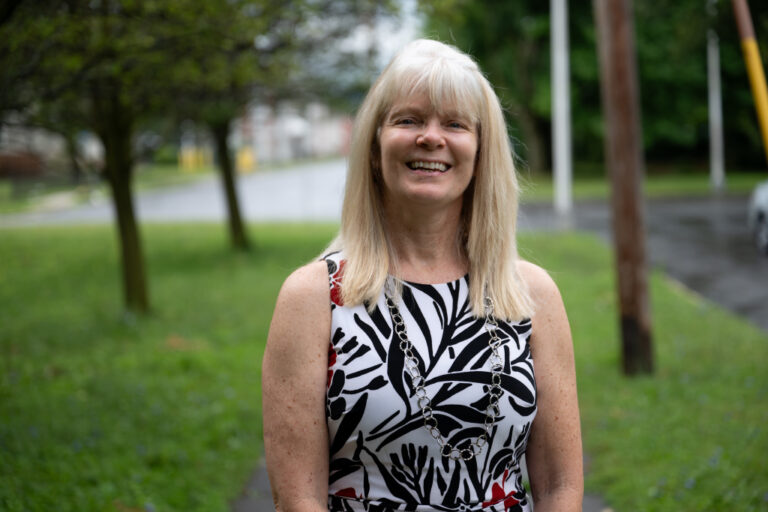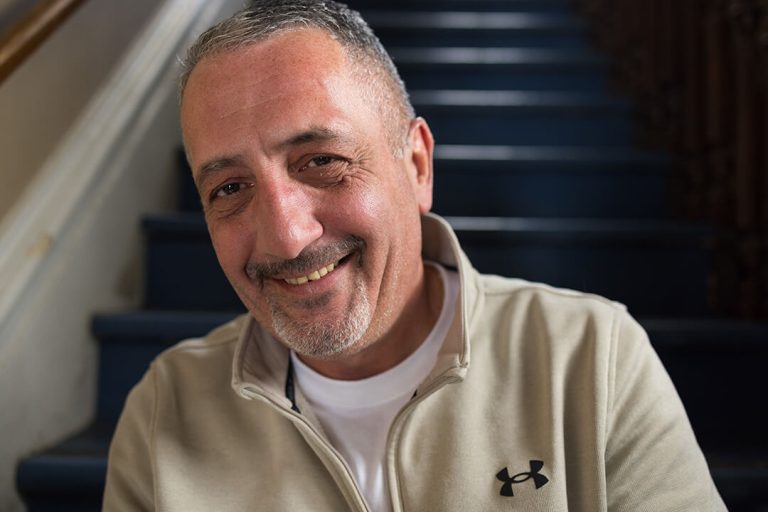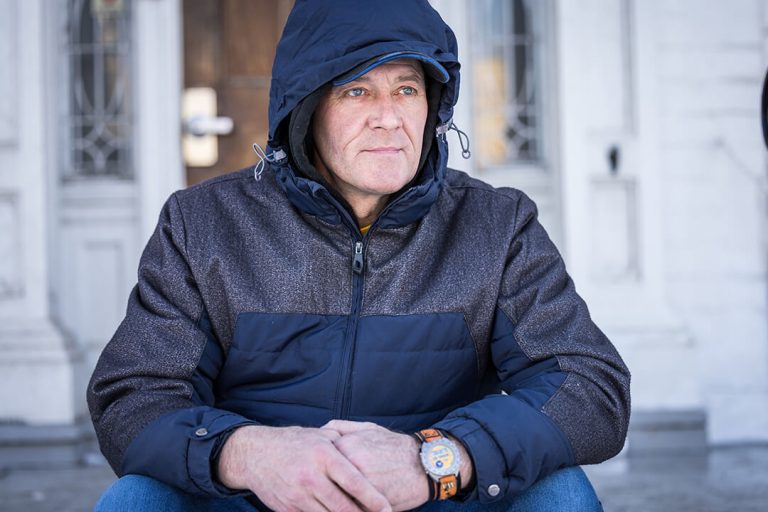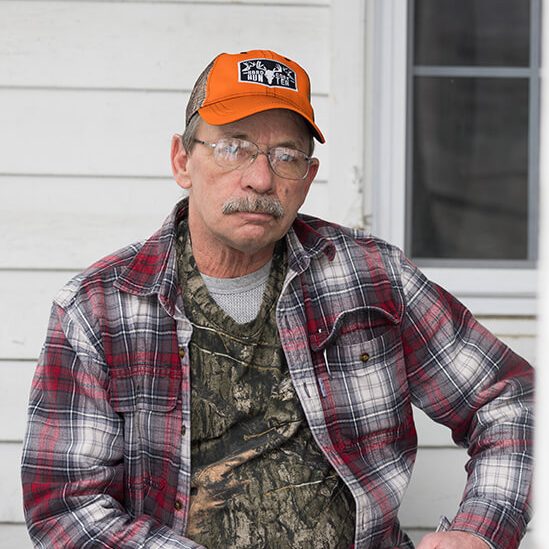UTICA — The Rescue Mission of Utica. YWCA Mohawk Valley. Johnson Park Center. Emmaus House.
All are among the organizations serving vulnerable populations that operate, in some capacity, in or around Utica’s Cornhill neighborhood. Clustered about the area, meanwhile, are more than a few hundred affordable housing units that have shaped Cornhill over the last 20 years.
Marques Phillips knows more than a handful of organizations operate within a few blocks of his house near Watson Williams Park. He does not see the same in more affluent neighborhoods, such as North and South Utica. He’s drawn his own conclusions.
“There’s places in the city that are untouchable,” said Phillips, who is the minority party analyst for the Oneida County Board of Legislators. “By coincidence, those places are largely and racially different. There are far less minorities living in those places than other places. The consequence of that is minorities bear a heavier burden.”
Cornhill is Utica’s most racially diverse neighborhood with some of the highest populations of blacks and refugees across the city, according to 2016 Census data provided by the Oneida County Planning Department. It also bears Utica’s highest poverty rate at 47 percent.
By contrast, North and South Utica are among the city’s most affluent by measure of poverty rate, median income level and income per capita. At least 86 percent of people in each neighborhood identify as white.
Reports on the region’s rates of domestic violence, homelessness and substance abuse have shown service organizations and affordable housing are needed — regardless of their location.
But by concentrating vulnerable populations into the Cornhill area, is it creating a different problem?
BACKGROUND: HOPE VI
The HOPE VI project saw the construction of 51 homes sold to single-family residents and an additional 109 apartment units in Cornhill.
• The rental communities developed out of HOPE VI, Rutger Manor and Steuben Village, are located along parts of Eagle, Oneida, West and Steuben streets, among other areas.
• HOPE VI is a program through the U.S. Department of Housing and Urban Development. Project construction was carried out by the Utica Municipal Housing Authority.
Housing Visions, a Syracuse-based nonprofit, manages the rental properties created out of HOPE VI. The nonprofit additionally manges dozens of other rental units through separate housing developments across Utica, including the Genesee Crossing development in the Noyes Street area.
Source: O-D archives
“Even though integration is permitted and there are pockets of integration, it is largely and culturally segregated in this county and throughout America,” Phillips said, “And there’s just a ton of problems that come with that.”
Location, location, location
A service organization cannot serve a population if the population cannot reach its services.
Accessibility, then, is a key reason for the clustering, said Colleen Fahy-Box, commissioner of Oneida County Department of Social Services. Cornhill is a central residential neighborhood in Utica, located close to downtown and everything that comes with it, including public transportation, businesses, banks and the Oneida County Office Building.
“Sometimes, the social service delivery system is one of the causes of how we end up with having vulnerable populations concentrated in certain areas,” said Jonnell Robinson, associate professor of community geography at Syracuse University.
In that vein, the Rescue Mission of Utica transformed a vacant building on West Street into 42 units for low-income working families. The apartments are down the street from the Rescue Mission’s Rutger Street campus.
“We’re just trying to stay within our footprint where we have all of our services located,” said Rescue Mission Executive Director Jim Haid.
To say everything is located within Cornhill would be inaccurate, as well.
The McPike Addiction Treatment Center, Milestones and Insight House — three substance abuse centers in Oneida County — are north of the Cornhill area. The Utica Municipal Housing Authority, meanwhile, has housing developments across the city, including Gillmore Village in South Utica and Humphrey Garden to the north — though Phillips contends those two are communities isolated unto themselves.
Much of Cornhill’s affordable housing stock can be attributed to the federal HOPE VI project. Supervised by the U.S. Division of Housing and Urban Development and administered by the Housing Authority, HOPE VI led to the construction of more than 100 new affordable homeownership and rental opportunities, with the rentals managed by Syracuse-based nonprofit Housing Visions.
Housing Authority Executive Director Robert Calli said site availability and the age of Cornhill’s housing stock — some of the oldest in the city — have factored into project development with the overarching goal of enhancing quality of life.
“A lot of these people have gone through life where they believe, in their minds, that they’ve been just a number. Just a number in a system,” Calli said. “But if you improve their quality of life, they feel better about themselves. … I’ll take anybody to task to suggest development plus services does not equate to enhancing the quality of life of people and allowing them to generate greater self-esteem, greater motivation and greater independence.”
Centralized poverty
Construction is underway by the Municipal Housing Authority to add 50 more affordable units to the mix around the former Theodore Roosevelt School on Brinckerhoff Avenue.
The units are part of the Roosevelt Residences project, which calls for the construction of 25 new buildings on 11 separate sites throughout Cornhill. Five units are set aside for permanent supportive housing for homeless veterans and other chronically homeless populations.
Utica Common Councilman Bill Phillips has lauded the project in the past. At the same time, the councilman — like his son Marques — believes the solution to solving poverty is not by keeping it in one place.
“Why can’t you get tax credits to build affordable housing in a better neighborhood?” Bill Phillips asked. “I believe that, and I’ve had a life experience of this, that if you wake up every day and see your neighbors going to work, you see your neighbors working, see the kids are going off to school and they got a nice backyard and a nice home, chances are that’s what you’re going to be. That’s what you’re going to strive to be.
“I think most of our health issues are due to poverty and a lack of education,” he added, “And there’s a segment of society that is benefitting from the way it is right now.”
The Municipal Housing Authority, Calli said, always has talked about mixed-income development and always is looking for the right opportunities. He again referenced site availability.
Calli said he also believes a neighborhood can play a role in a person’s upbringing, though it is not the most significant.
“I think, and not to say this as a cop out, but I think there are needs and challenges regardless of where you live,” he said. “My personal feeling is the stronger the family structure — regardless of whether it’s north, south, east or west — the better chance that a person has to make a better life for him or herself.”
In general, SU’s Robinson said she has found there is more resistance from established neighborhoods to new housing projects.
With a person’s quality of life, centralized poverty magnifies those issues, Robinson said. She offered an example: A single mother working multiple jobs cannot rely on a neighbor to watch her children because that neighbor is in a similar situation. For its part, the Utica Municipal Housing Authority does offer a number of tenant services, including youth and senior programs.
“Being poor, in of itself, is difficult,” she said. “What makes it even more difficult is when you’re surrounded by people who are also poor and lack access to resources.”
Revitalization revisited
When asked what the neighborhood needs, Marques Phillips suggested concepts such as an ice rink or a movie theater — things that could help make “everybody a stakeholder” in a community, he said.
The younger Phillips believes such a direction also could serve to knock down some of the city’s cultural barriers.
“People think of racism as people saying the N-word or not liking a group of other people, but a lot of it’s unintentional,” Marques Phillips said. “A lot of the challenges that we face as minorities or a lot of the challenges minority groups face are completely unintentional by this generation. It’s just to fix them would require sacrifice, and people generally don’t feel like they should sacrifice.”
With all things considered, is the current direction truly revitalizing Cornhill?
There is no simple answer, Robinson said, adding that it might require the community to figure out what exactly revitalization means — and according to whom.
“Revitalization might require a fresh coat of paint to make people feel good about living in a neighborhood because they think it’s clean and safe,” she said, “But what’s also equally important, if not more important, is developing neighborhood-based social capital that exists when you are able to live in a neighborhood where people rely on one another.”
Contact reporter Greg Mason at 315-792-5074 or follow him on Twitter (@OD_Mason).
https://www.uticaod.com/news/20180610/are-centralized-services-housing-projects-hurting-cornhill





